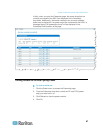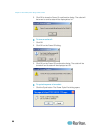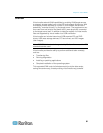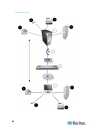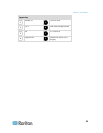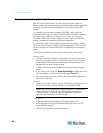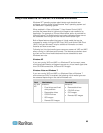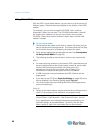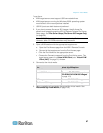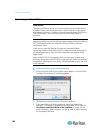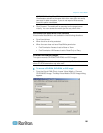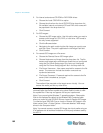
Chapter 5: Virtual Media
95
Using Virtual Media via VKC and AKC in a Windows Environment
Windows XP
®
operating system administrator and standard user
privileges vary from those of the Windows Vista
®
operating system and
the Windows 7
®
operating system.
When enabled in Vista or Windows 7, User Access Control (UAC)
provides the lowest level of rights and privileges a user needs for an
application. For example, a Run as Administrator option is provided for
Internet Explorer
®
for Administrator level tasks; otherwise these are not
be accessible even though the user has an Administrator login.
Both of these features affect the types of virtual media that can be
accessed by users via Virtual KVM Client (VKC) and Active KVM Client
(AKC). See your Microsoft
®
help for additional information on these
features and how to use them.
Following is a list virtual media types users can access via VKC and AKC
when running in a Windows environment. The features are broken down
by client and the virtual media features that are accessible to each
Windows user role.
Windows XP
If you are running VKC and AKC in a Windows XP environment, users
must have Administrator privileges to access any virtual media type other
than CD-ROM connections, ISOs and ISO images.
Windows Vista and Windows 7
If you are running VKC and AKC in a Windows Vista or Windows 7
environment and UAC is enabled, the following virtual media types can
be accessed depending on the user's Windows role:
Client
Administrator
Standard User
AKC and
VKC
Access to:
Fixed drives and fixed
drive partitions
Removable drives
CD/DVD drives
ISO images
Remote ISO images
Access to:
Removable drives
CD/DVD drives
ISO images
Remote ISO images



